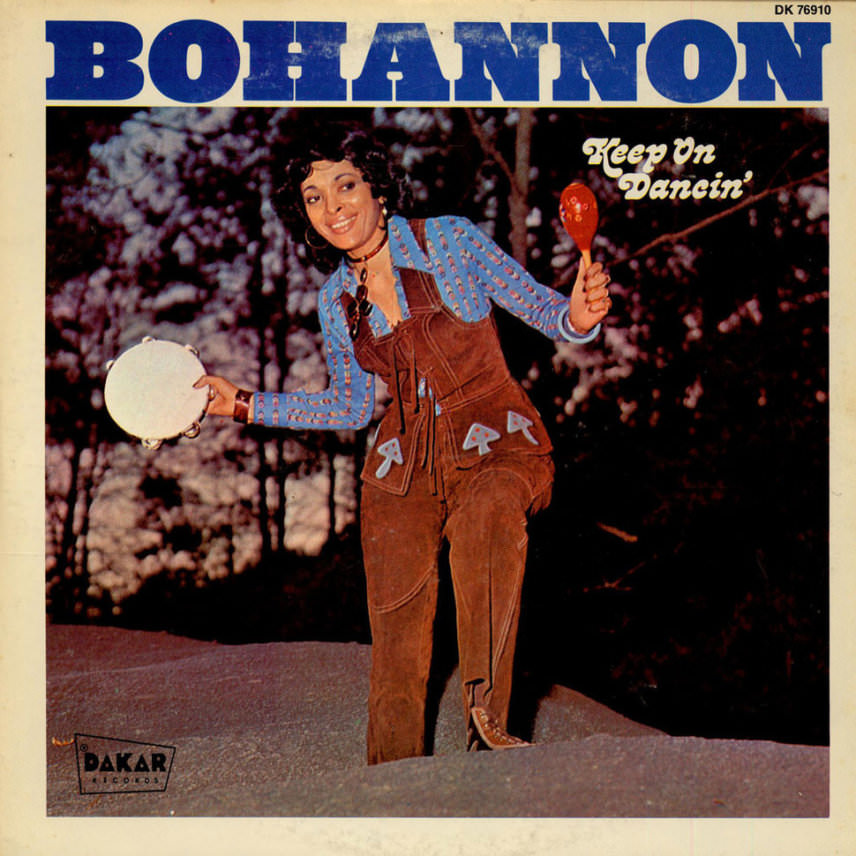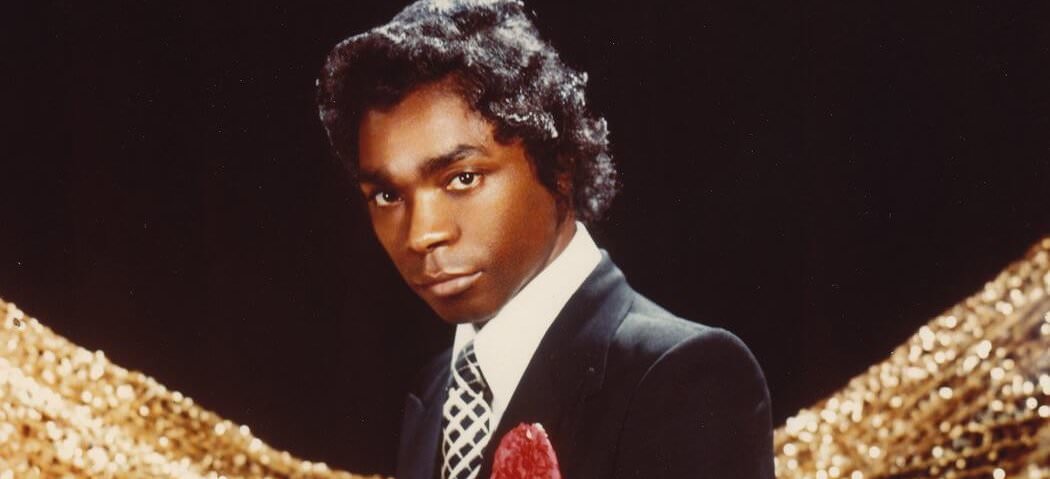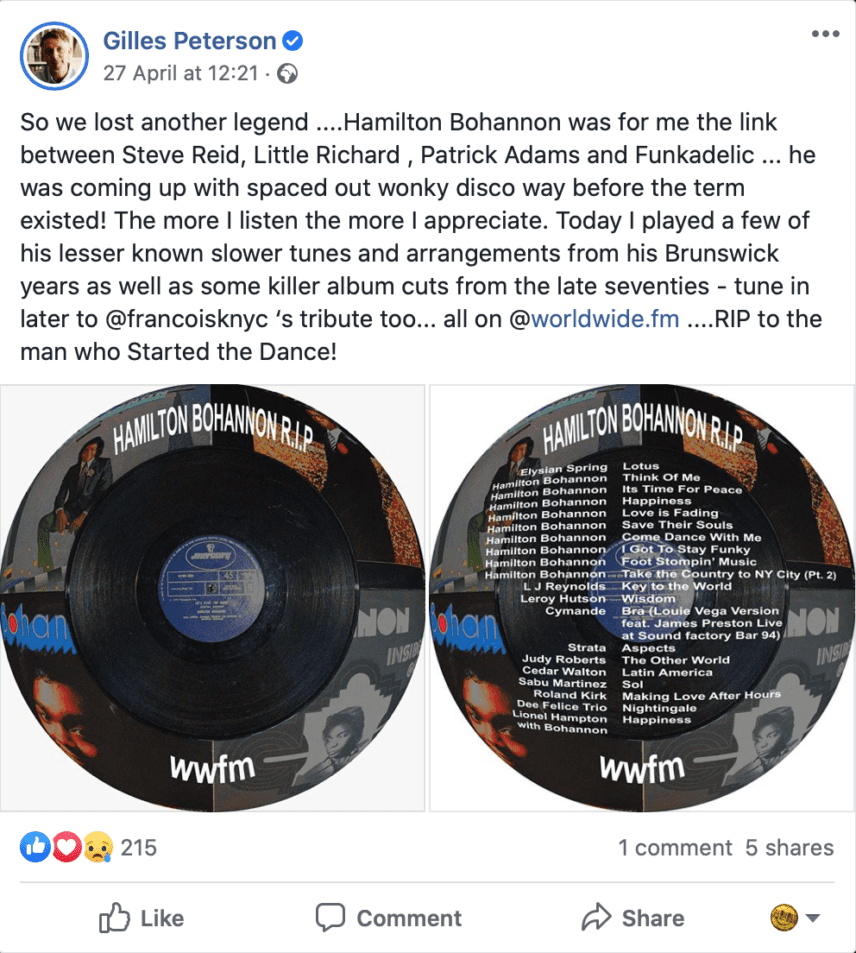Drummer and bandleader Hamilton Bohannon passed away last month. We take a look at his work and contribution to the development of 4/4 dance music.
Hamilton Bohannon, drummer, songwriter and bandleader, died on April 24th 2020 aged 78. Bohannon is an artist who isn’t particularly well known outside of soul and disco but who had a subtle influence on the development of disco and therefore on the development of house and techno too.
In 1964 Stevie Wonder hired Bohannon as his live drummer and Motown later employed him as a bandleader. With his group, he backed many Motown stars like The Supremes, Marvin Gaye and The Four Tops. When Motown moved from Detroit to LA in 1967, Bohannon stayed in Detroit and began his solo recording career. He went on to release nineteen disco/soul albums, starting with ‘Stop & Go’ in 1973.
For much of the 70s and 80s, Bohannan put out a series of disco instrumentals, all characterised by his insistent 4/4 kick drum rhythm and a general disregard for song structure. Instead, he substituted circular riffs and repeating grooves for verses and choruses. When he used vocals at all they tended to be chants, occasional spoken phrases or simple refrains.
In pioneering this minimal, dance-floor focused aesthetic, Bohannon pre-dated loop-based house records
By abandoning a traditional song structure in favour of a groove, Bohannon was continuing the innovations of other black artists. Producers Norman Whitfield at Motown and Isaac Hayes at Stax had pioneered extended, languid funk records but even when producing twenty-minute vamps, neither had ever completely given up some kind of basic song structure. James Brown meanwhile, had spent most of his career slowly chiselling away at the song-content in his music, to reveal the finely tuned funk mechanisms that lay beneath. Bohannon’s particular innovation was to embrace James Brown’s anti-song, groove-based approach and successfully update it for the emerging disco era.
You Can’t Stop The Groove
Bohannon didn’t make songs, he made live loops. He took funk instrumentation – organ, electric bass, percussion, chicken scratch and wah-wah guitars – and then put his straight 4/4 kick underneath it all. Pushing the drums, congas, bongos and shakers to the front of the mix he refused to do anything much in his songs except hit a groove. A skeletal guitar might rattle out a thin solo. He might let his harmonica or keys player jam for a bit, but bar the occasional chord modulation, Bohannon simply vamped. Groove became paramount: repetitive, relentless, a looping endless 4/4 groove – sound familiar?
Bohannon was essentially creating dub mixes of soul records for club DJs. Except he created them with a band, not via studio equipment. In pioneering this minimal, dance-floor focused aesthetic, Bohannon pre-dated loop-based house records and the repetition of acid house and loop techno. On his Worldwide.fm tribute to Bohannon, Francois Kevorkian described the drummer as: “One of the most brilliant and original artists of his time who helped define as well as forge the template for the sound of dance music”. Bohannon, along with many other innovators, contributed to the development of what would lead to house and techno a decade later.
Let’s Start The Dance
He created a catalogue of tough, dancefloor-ready grooves that were popular in the clubs and discos of the time. Then, his music was played in early house music clubs in the US. Bohannon’s tunes were played on the rare groove scene in London and at early acid house raves too. He’s been sampled substantially by the hip hop and house community – from Underground Resistance to J Dilla – and still gets spins from the likes of DJ Harvey, Hifi Sean and Francois Kevorkian.
Bohannon committed to the 4/4 kick drum unreservedly, building complex music-machines of efficient, interlocking parts. He made tracks for DJs rather than songs for radio. His music was like the ‘DJ Tools’ folder on a DJ’s USB stick: solid, dependable rhythm tracks and dub mixes, essential dance floor fodder.
In honour of a career spent in service of the 4/4 pulse, we look at some of Bohannon’s musical highlights.

Let’s Start The Dance III, Francois Kevorkian Mix, 1981
A whirl of effects, swirling synths and layers of percussion, packed with heavily delayed keys and guitar and the source of plenty of familiar samples, Francois K’s mix of ‘Let’s…’ is a guaranteed dance floor monster. Bohannon reworked this tune several times in his career. The original version came out in 78 with ‘Let’s Start II Dance’ in 81. Francois Kevorkian took over mixing and overdubbing duties for ‘Let’s Start The Dance III’.
South African Man Pt. 1, 1974
One of Bohannon’s most well known and distinctive tunes, ‘South African Man’ was a minor hit in 1974. It’s virtually unique, as far as we know, in having a 4/4 time signature with a bar of 5/4 at the end of every 4 bar sequence. This means that it seems to have an extra beat every eight bars. It’s a superbly off-kilter rhythmic technique, what Gilles Peterson called ” lopsided rhythmic brilliance….”
Truck Stop, 1974
From its bongos, shaker and conga intro to the last 30 seconds of layered percussion and lonely harmonica, ‘Truck Stop’ is a wall of relentless groove. Featuring circling wah-wah riffs and interlocking guitar and harmonica solos, Truck Stop’ epitomises the sort of underground disco-minimal vamp which Bohannon perfected. It’s underpinned by a simple repeating bassline and Bohannon’s beat and features just two chord changes over its entire six and a half minute duration.
Me And The Gang, 1978
Recognise that riff? Paul Johnson’s crossover hit from 1999 ‘Get Get Down‘ was a reworking of Bohannon’s 1978 stormer ‘Me And The Gang’. Bohannon’s music has been a rich source of samples and inspiration for dance music and hip hop artists alike. Artists who’ve sampled Bohannon include Mary J. Blige, Jay-Z, DJ Vadim, Mr Ozio, J Dilla, Re-Tide & Moon Rocket, Danny Tenaglia and Underground Resistance.
The Fat Man, 1974
The 2 minutes and 36 seconds of Boannon’s ‘The Fat Man’ are an absolute dancefloor delight. He lines up layers of Latin percussion, choppy clavinet, harp flourishes and a relentless b-line. It all adds up to create a driving, mini-disco-funk anthem. ‘The Fat Man’ also has a killer breakdown featuring what sounds like an entire orchestra of percussion players.
Hamilton Bohannon, March 7, 1942 – April 24, 2020.
Francois K’s tribute to Hamilton Bohannon is on Worldwide.fm.

